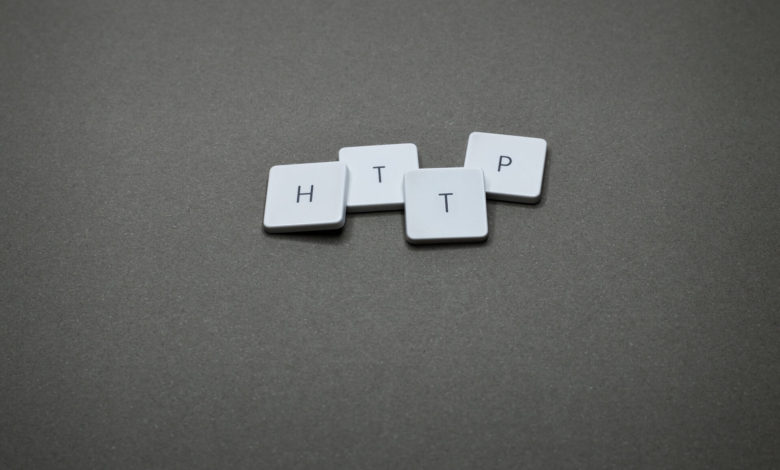Why Should You Switch to HTTP/3?

In this article, we explain why HTTP / 3 should be passed and the innovations it brings. We will also mention its advantages for both users and developers.
Previously, we discussed in detail what is HTTPS, what is the SSL certificate for, what the HTTP protocol is. In this article, we will talk about the versions of TTP, the innovations it brings with each version and why it is necessary to switch to the HTTP / 3 version. If you want to learn basic information about HTTP and HTTPS protocols, you can take a look at the article we wrote, but let’s go back to summary.
As it is known, what we call the internet is a structure consisting of billions of connected devices and servers. There are various websites in the sabal world, which we use today as the Internet. For example, Technopat.net is a publication that aims to deliver new and accurate information in the field of technology to its valuable readers. When you click on this article to read, your browser transmits the request to the client side with the help of some protocols. Web servers, on the other hand, process requests and send some data to the browser. As a result of the processing of this data by the browser, our page appears before us.
This broadcast takes place with the help of HyperText Transfer Protocol, which we call HTTP. This protocol, developed in CERN laboratories as part of the WorldWideWeb project, namely the WWW project, is one of the most important structures at the base of the websites. HTTP uses TCP for this data transfer. Each web server and clients (computers) that make requests to the server have an IP address. The data can also find its destination through these addresses. Communication takes place roughly this way.
Developed to bring a certain standard to the network world, the “application-level”, ie HTTP, in the application layer of the OSI layers can process the incoming requests at different times by using various web server software with various configurations. Since HTTP is also an application, it has an updateable structure. For this reason, it can be said that various versions have emerged according to the needs of the period.
HTTP / 1.0 and 1.1
HTTP / 1, which was documented in 1997 with RFC 2068, the first version of HTTP that was started to be developed in 1989, had a more browser and computer friendly structure compared to the 1.1 period. This version included the support of GET, HEAD and POST terms, as well as a structure containing various meta information, HTTP version and contents in the headers in terms of requests and responses. The connection was terminated immediately after the requests were made and answered.
Due to the head-of-line block problem, which was the main problem of HTTP / 1.0, he could not receive the other request before completing the incoming request. As you know, websites contain various resources and code structures. The loading of these structures was quite long due to the head-of-line block in HTTP / 1.0.
In the periods when Web 2.0 applications were emerging slowly, the HTTP / 1.1 version appeared because such a delayed structure was not very efficient. In the new version, the problem was solved by using a consecutive request order so that new requests do not have to wait for each other.
HTTP / 2
HTTP / 2 is the almost standard HTTP version that was published with RFC 7540 in 2015 and is currently used on many sites. In this version, multiple and simultaneous requests to the web server on a connection can be responded to. As well as the benefits, requests and responses can be affected by packet loss due to congestion in the network. In this version, the TCP protocol provides the flow of data in bytes between endpoints. Due to problems in the connection, various bytes may be corrupted or lost during this transfer. It solves the problem by re-enabling the TCP request to correct the loss and corruption.
Various delays and slowdowns may occur during communication due to the re-request. In fact, this is somewhat similar to the head-of-line block problem experienced in HTTP 1.0.
HTTP / 3
It is the HTTP version that is planned to replace HTTP / 2 today. In this version, it is aimed to completely eliminate the head-of-line block problem. Thus, it aims to create a connection that is more delay-free, faster and that will process and respond to requests better. Unlike other HTTP versions, it does not utilize TCP for communication, but instead uses a much newer data transport layer called QUIC (Quick UDP Internet Connections). Since QUIC has an encrypted structure by default, we will be able to access websites both more securely and faster if HTTP / 3 is used.
With this new standard, it is planned to replace the TCP and TLS encryption in the HTTP protocol. CloudFlare, one of the major and leading cloud providers, mentions the following advantages of HTTP / 3:
- New header compression QPACK
- Intrinsic safety
- No head-of-line block issues
- UDP Performance
- Deflecting Reflection
With this new HTTP standard, we can now say that faster and more efficient websites are waiting for us. In this version, many problems of the HTTP protocol have been resolved, it is known that the abandonment of TCP will make a much more difference in terms of performance for websites due to the resolution of the head-of-line blocking problem.
So why should I switch to HTTP / 3 as a web developer?
The answer is actually quite simple. Basically, we can start to count the advantages of switching from TCP to QUIC, respectively.
One of these advantages is low latency. For example, according to a study conducted by Google, it was revealed that if QUIC is used, the loading time on YouTube accelerated by 15 percent and the search results 3.6 percent faster. Also, in the past, switching between networks had a slight effect on speed. With the arrival of QUIC, this situation has disappeared.
Handshakes on links are now more efficiently optimized. With QUIC, instead of supporting two or more handshakes on a connection, a single handshake becomes sufficient. Therefore, if there is a communication in the middle, the active connection time increases. Apart from all these, the head-of-line blocking problem found in previous HTTP versions has been solved.
Result
In this article, we talked about HTTP versions, new versions and innovations that come with standards. However, we also touched on why websites should switch to HTTP / 3 version. Several web servers and cloud providers currently support HTTP / 3. As Technopat, we have been using this protocol for a long time. In order to create faster websites and get rid of the delays of the old versions, it is useful to prefer the new standards to the old.





